By PJ Liesch, Diagnostic Lab and Devon Pierret, UW-Madison Entomology
XHT1285
Apr. 22, 2021
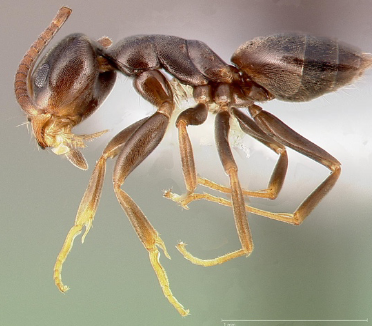
Odorous house ants (Tapinoma sessile) can be found across the United States and are one of the most common ants found in and around structures in Wisconsin. These ants are known for their fondness for sugary foods and their distinctive odor when crushed.
Appearance: Odorous house ant adults are dark brown to black and approximately 1/8 inch long. Their waist (petiole) has a single flattened node, which may be difficult to see because it is obscured by other body parts. They also have 12-segmented antennae that lack a distinct club. Odorous house ants smell like rotten coconut or blue cheese when crushed.
Biology: Odorous house ants forage day and night, following well-established trails. Around buildings, they often follow the edges of siding, deck boards, and door frames. Odorous house ants are particularly fond of sugary materials such as honeydew (the feces of aphids or soft scales), and sugary foods and beverages. Occasionally, they will feed on insects (both dead and alive) or on other items such as pet food. Odorous house ants prefer to nest in moist areas and often create a network of interconnected nests consisting of thousands of workers and many queens. Outdoors, they can nest in mulch beds, beneath stones or pieces of wood, under the loose bark of trees,and beneatha variety of man-made objects. Indoors, odorous house ants can nest in wall voids and attics, in areas with damp wood or insulation, and near plumbing fixtures or vents. When a nest is disturbed, odorous house ants can quickly relocate to another sheltered spot.They establish new colonies after mating flights (swarms) in late spring and early summer. Colonies can also divide in a process known as “budding”, where a queen will leave a nest with a group of workers and establish a colony in a new location.
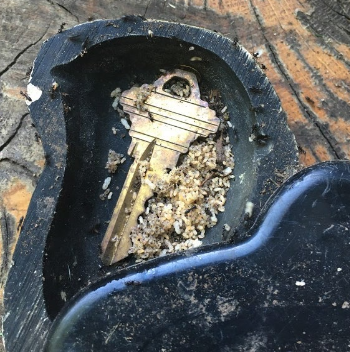
Control: Make sure you properly identify ants before attempting control. Knowing the type of ant provides clues about their biology and habits, which helps in the selection of the most appropriate management options.
During warmer months, odorous house ants foraging indoors often come from outdoor nests. Keeping plants and dense mulch away from building foundations can reduce this indoor activity. When you see odorous house ants indoors, watch their movement, and try to track them back to where they are entering the building. Sealing these entry points may take care of the problem. If you can track the ants back to an outdoor nest, you can treat the nest with an aerosol or liquid ant control product (available at a hardware store or garden center). However, because odorous house ants can have many interconnected nests, treating a single nest may not fully eliminate the problem. Additional monitoring and treatments may be needed.
If an odorous house ant nest is indoors in an inaccessible spot such as a wall void, baits may be the best control option. Odorous house ants usually respond well to sugar-based baits (available at a hardware store or garden center). The ants collect the bait and take it back to the colony where the materials in the bait can kill the queen, thus eliminating the nest. Place the bait near the foraging trails of the ants. DO NOT apply other insecticides (e.g., spray insecticides) near the bait, as this can reduce its effectiveness. After setting out the bait, you may notice an increase in ant activity as additional members of the colony are recruited to collect the material. Continue to monitor the area, setting out fresh bait as needed, until ant activity fully subsides.
If your odorous house ant problem is extensive, consider consulting a pest control professional with experience in managing ants. These professionals have additional treatment options and techniques not generally available to homeowners. For more information on odorous house ants: Contact your county Extension agent.
Download Article





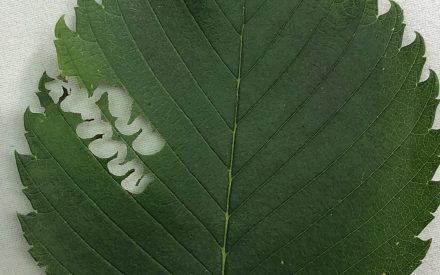 Elm Zigzag Sawfly
Elm Zigzag Sawfly ▶ Watch: How do Pesticides Affect Pollinators and Songbirds in Your Yard
▶ Watch: How do Pesticides Affect Pollinators and Songbirds in Your Yard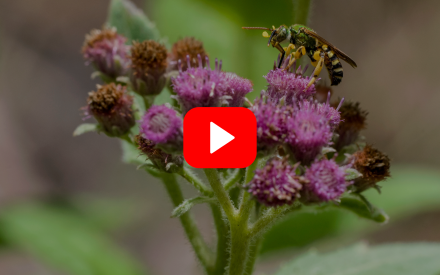 ▶ Watch: Pollinator Gardens: Plant Selection and Garden Care
▶ Watch: Pollinator Gardens: Plant Selection and Garden Care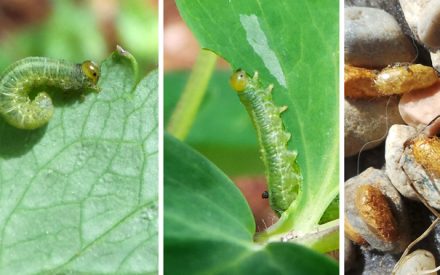 Strategies for Identifying and Managing Insect Pests
Strategies for Identifying and Managing Insect Pests


